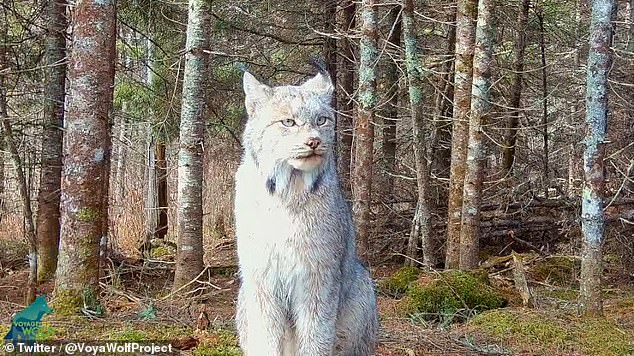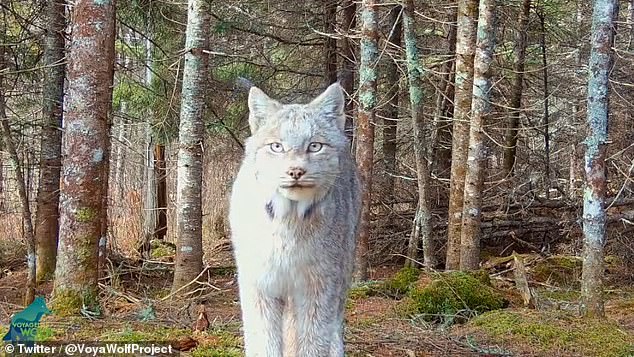A Canadian lynx was caught on camera in a forest in northern Minnesota, and the rare footage shows the predator unwittingly posing.
Biologist Tom Gable, director of Voyageurs’ Wolf Project, discovered these unique images while reviewing thousands of hours of recordings.
The video, which was filmed on the Kabetogama Peninsula, shows the elusive lynx walking calmly through the forest before landing just a few metres away from the camera. The creature’s curious gaze and swiveling ears almost made it look like the lynx knew it was being filmed.
While the Voyageurs Wolf Project has captured lynx on camera before, Gable highlighted the extraordinary nature of these images. He noted that most trail cameras that feature lynx only capture them at night or from a distance.
“A lot of fortuitous things have to happen, not just for the bobcat to sit there, but for the lighting to be nice and for there to be that nice North Woods background,” Gable said. Star Tribune“Those are the things that make it really great.”
Rare footage of a stunning Canada lynx has gone viral as the predator seemingly ‘poses’ for the camera.
Social media users were captivated by the lynx’s adorable appearance, with many describing it as “friend-like.”
The creature was filmed in a remote, heavily wooded area that can only be accessed through the forest, and is known to be home to approximately four wolf packs.
Gable’s team maintains a network of 350 cameras to study wolf behavior in the region. Their research is funded by the Minnesota Environment and Natural Resources Trust Fund.
To increase the chances of capturing clear wildlife images, cameras are strategically placed along heavily used animal trails rather than in more crowded areas such as ATV trails or forest roads.

Biologist Tom Gable, director of Voyageurs’ Wolf Project, discovered the once-in-a-lifetime images while reviewing thousands of hours of footage.
The Canada lynx, recognized by its distinctive long fur and black ear tufts, is considered a threatened species under the Endangered Species Act.
Estimates of the species’ population in Minnesota range from 100 to 300.


